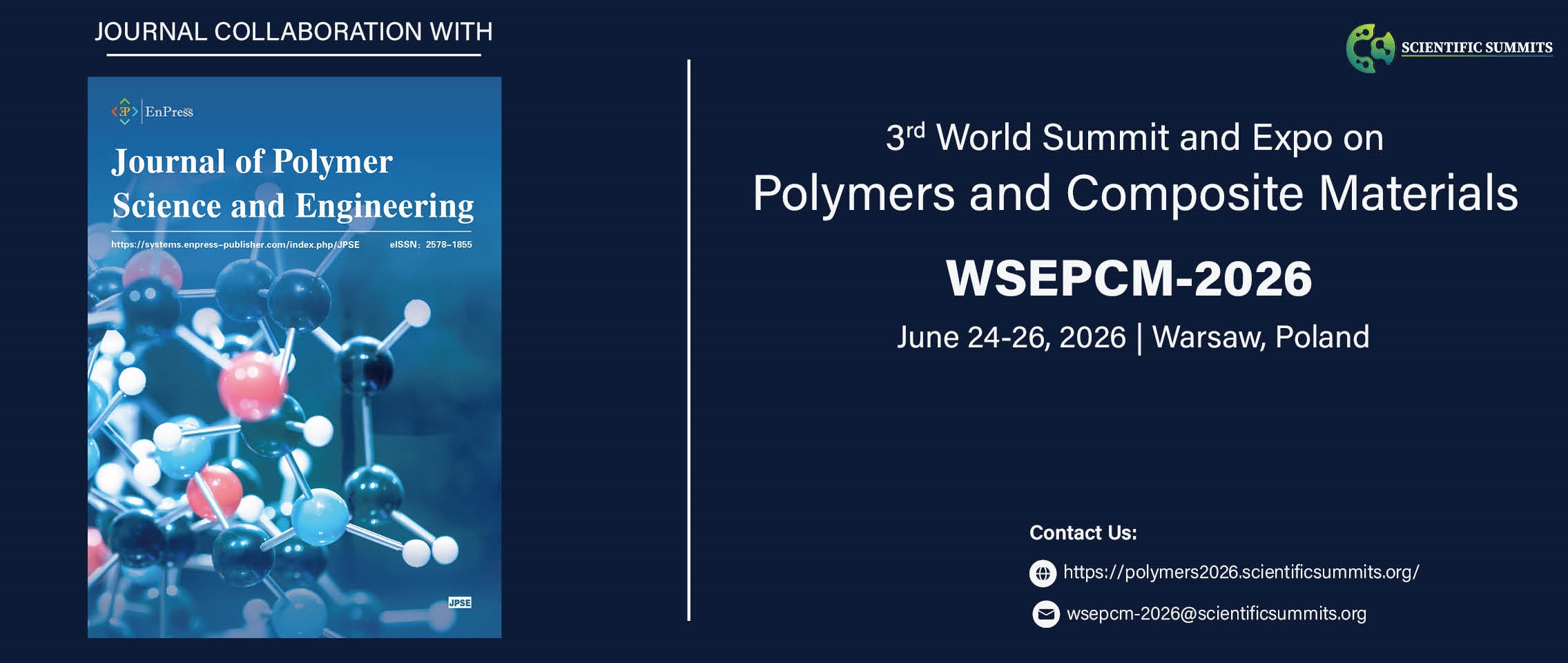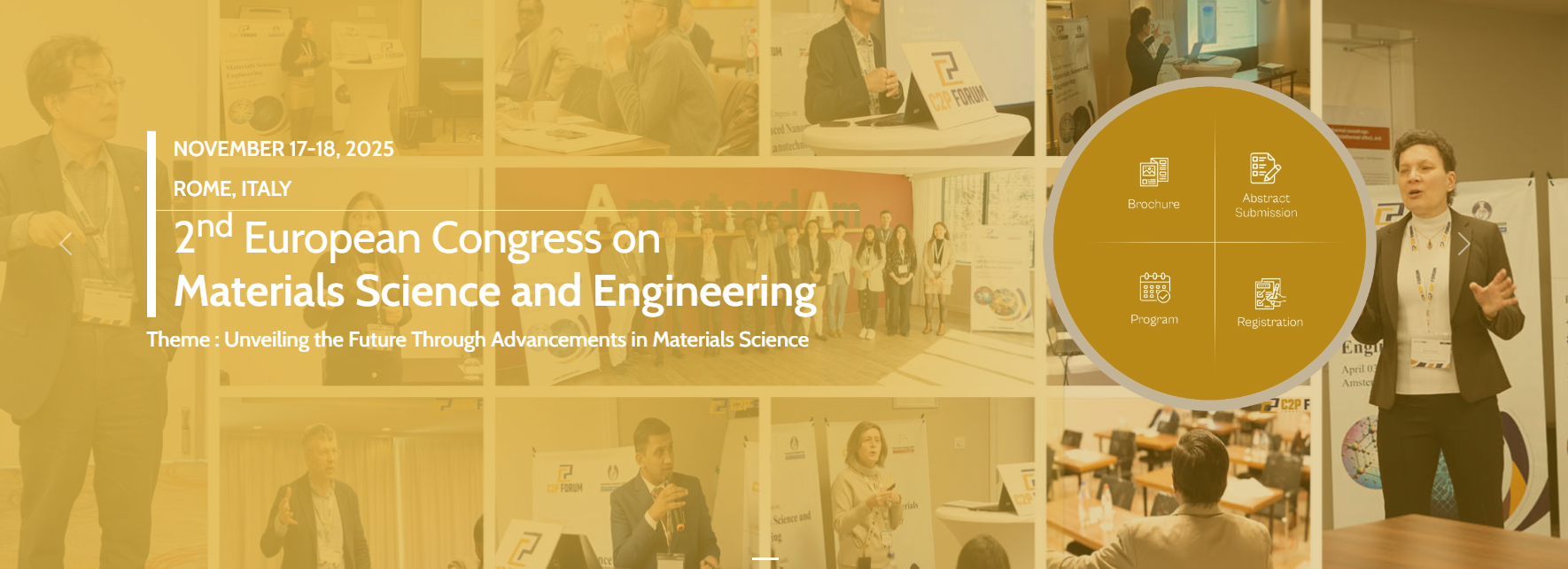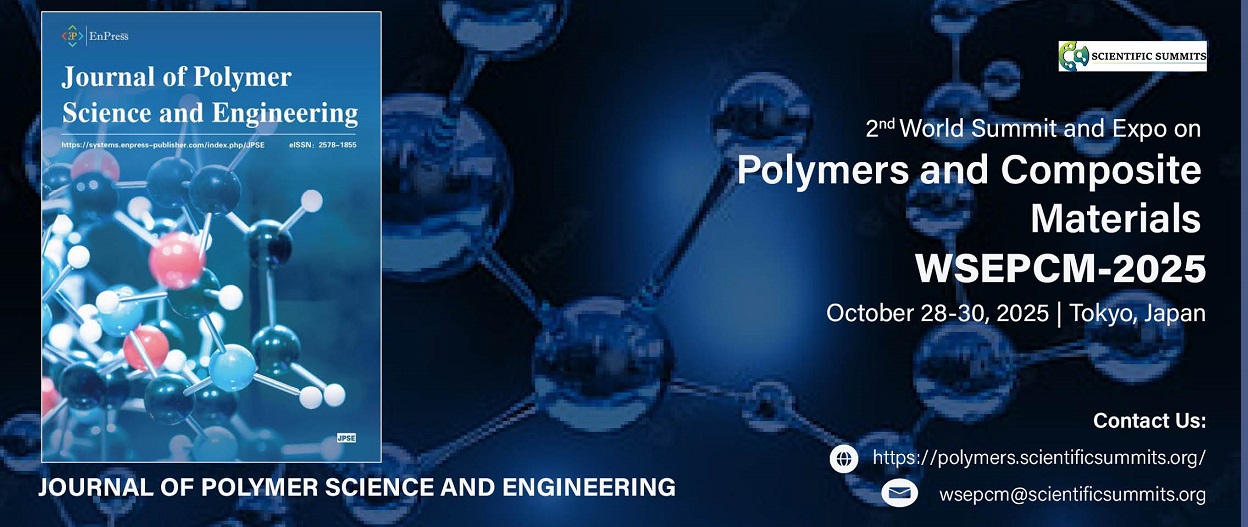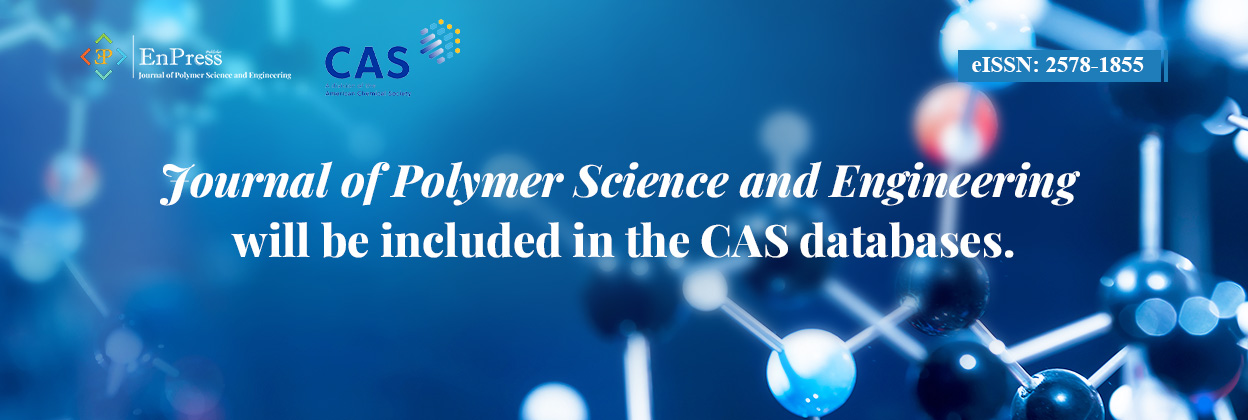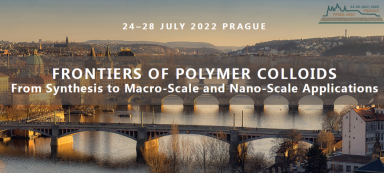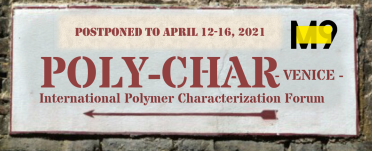Journal of Polymer Science and Engineering accepted for inclusion in Scopus |
|
We are thrilled to announce that Journal of Polymer Science and Engineering (JPSE) has been officially accepted for inclusion in Scopus! This milestone reflects our commitment to advancing high-quality research and fostering global scholarly exchange. |
|
| Posted: 2025-08-13 | More... |
JPSE cooperates with WSEPCM-2026 as a journal partner |
|
|
|
| Posted: 2025-08-01 | More... |
Conference collaboration between JPSE and 2nd European Conference on Materials Science and Engineering |
|
|
|
| Posted: 2025-05-22 | More... |
JPSE supports WSEPCM-2025 as a publication partner and conference sponsor |
|
|
|
| Posted: 2025-05-14 | More... |
JPSE will be included in CAS databases! |
|
|
|
| Posted: 2025-05-07 | More... |
A graphical abstract is encouraged from 2025 |
|
As of 2025, the journal will encourage that authors submit manuscripts accompanied by a graphical abstract. A graphical abstract serves as a visual synopsis of the manuscript, succinctly conveying its objectives and distinctive contributions. This facilitates readers' rapid and effective comprehension of the paper's core message, encouraging them to explore the text further, including the abstract, conclusion, introduction, and figures. It also assists reviewers in forming an initial assessment and understanding of the manuscript. |
|
| Posted: 2025-01-01 | More... |
Notice: Vol 7, No.1 (2024) is available online! |
|
This issue of the Journal of Polymer Science and Engineering showcases the remarkable advancements taking place in the utilization of cutting-edge polymeric and composite materials for biomedical applications. The papers included in this edition explore a diverse range of groundbreaking research that harnesses the unique properties, functionality, and versatility of these cutting-edge materials to address critical challenges across the healthcare and medical industries. The insights presented here underscore the transformative potential of polymer-based solutions to enhance patient care, improve therapeutic outcomes, and drive the development of next-generation biomaterials and medical technologies. Please find more details here. |
|
| Posted: 2024-07-06 | |
Notice: JPSE changed to be a semi-annual journal |
|
Starting from 2024, the publication frequency of Journal of Polymer Science and Engineering (JPSE) is semi-annual. All articles that have been accepted will be online in time without delay. We welcome high-quality submissions in all disciplines of traditional fields of polymer chemistry, physics and engineering involving polymers, but also within interdisciplinary developing fields, such as functional and specialty polymers, biomaterials, polymers and drug delivery, polymers in electronic applications, composites, conducting polymers, liquid crystalline materials, the interphases between polymers and ceramics, and new fabrication techniques.
Editorial Office of Journal of Polymer Science and Engineering (JPSE) |
|
| Posted: 2024-03-26 | |
Notice: New layout style in 2024 |
|
Journal of Polymer Science and Engineering will adopt a new layout style starting from Volume 7, Issue 1, 2024. Contributors should follow the new author guidelines and download the new template for preparing manuscripts. Another important change is that Creative Commons Attribution (CC BY) license (https://creativecommons.org/licenses/by/4.0/) will be applied to new publications. Journal of Polymer Science and Engineering welcomes high-quality submissions from researchers from all over the world. |
|
| Posted: 2024-01-05 | |
Notice: 2023 Volume 6 Issue 1 available online |
|
We are pleased to inform all our readers that Volume 6 Issue 1 is now available online (click here for its full content). 2023 is a key turning year for Journal of Polymer Science and Engineering (JPSE). During this year, we have renewed our editorial board members, formed a new managing team, and further raised the standard of journal operations. Judging from the year's publication, these changes have had a positive effect. We would like to express our sincere gratitude to all the scholars who have been involved in the publication of this journal. We would also like to thank all the authors who have placed their trust in us to publish their excellent research in the journal. We are confident that this issue of the journal will provide readers with cutting-edge information. We look forward to readers downloading and reading it. |
|
| Posted: 2024-01-03 | |
Notice: Welcome Prof. Kumar Tamma to join JPSE editorial team |
|
 Welcome Prof. Kumar Tamma to join JPSE editorial team as Co-Editor-in-Chief. |
|
| Posted: 2023-11-15 | More... |
MACRO 2022- The 49th World Polymer Congress |
|
| Posted: 2022-06-09 | More... |
84th Prague Meeting on Macromolecules – Frontiers of Polymer Colloids |
|
This PMM was originally planned to be held in July 2020 and first postponed in July 2021. It is again postponed and rescheduled for July 24–28, 2022. |
|
| Posted: 2022-03-26 | More... |
The 48th World Polymer Congress (IUPAC-MACRO2020+) |
|
 |
|
| Posted: 2021-04-16 | More... |
Poly-Char 2020 [Venice] – International Polymer Characterization Forum |
|
This conference was initially planned to be held from May 18-22, 2020 and postpone to October 5-9, 2020. Ultimately, it was rescheduled 12-14 April 2021. |
|
| Posted: 2020-10-18 | More... |
10th International Symposium on Molecular Order and Mobility in Polymer Systems |
|
 The 10th International Symposium “Molecular Order and Mobility in Polymer Systems”, MOMPS-X, will be held by the Institute of Macromolecular Compounds of Russian Academy of Sciences in St. Petersburg, Russia,May 18-22, 2020. |
|
| Posted: 2020-02-13 | More... |
| 1 - 16 of 16 Items | |




